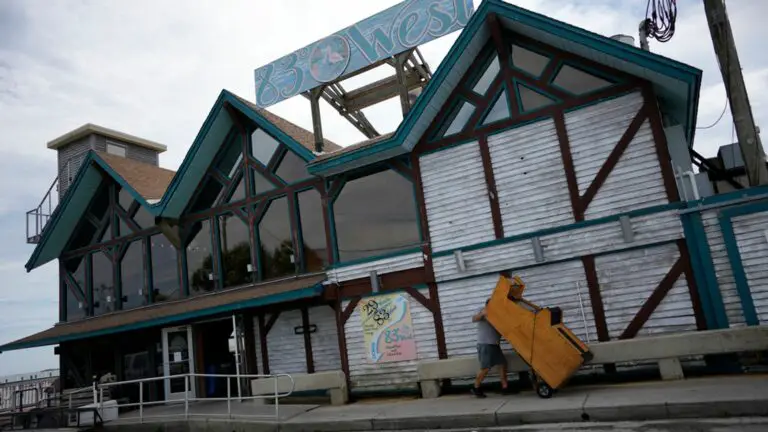Hurricane Idalia Poses Life-Threatening Risks for Florida’s Gulf Coast
Florida’s Gulf Coast residents are on high alert as Hurricane Idalia approaches, bringing with it the potential for dangerous storm surges and powerful hurricane-force winds. The National Hurricane Center issued these warnings in the wake of heavy rain, flooding, and landslides that impacted Cuba.
Expected to strike Florida’s northwestern coast as a Category 3 hurricane by 6am on Wednesday (local time), Hurricane Idalia is projected to unleash 10 to 20cm (3 to 8 inches) of rain and winds reaching up to 120mph (193kph).
The most perilous threat lies in the possibility of a massive wall of water, ranging from 8ft (2.44m) to 15ft (4.5m) in height, surging onto low-lying coastal areas. These surges occur when powerful hurricane winds and atmospheric pressure force ocean water onto land. This phenomenon, known as storm surges, often proves to be the most destructive aspect of a hurricane.
Authorities have issued storm surge warnings for hundreds of miles of Florida shoreline, stretching from Apalachicola Bay to Tampa and extending down to Sarasota in the south. Alongside this threat, the alignment of the sun and moon with Earth, known as a king tide, is anticipated to elevate ocean tides further due to increased gravitational pull.
The impact of Hurricane Idalia has prompted the mobilization of around 1,100 National Guard members equipped with 2,400 high-water vehicles and 12 aircraft for potential rescue and recovery efforts. Evacuation orders have been issued for at least 23 Florida counties, including parts of Tampa.
Following its assault on the Gulf Coast, the storm is set to move eastwards across northern Florida, approaching Georgia’s border around 6pm. Beyond Florida, Hurricane Idalia will continue its path along the Gulf of Mexico coastline, affecting Georgia, South Carolina, and North Carolina on Wednesday and Thursday.

